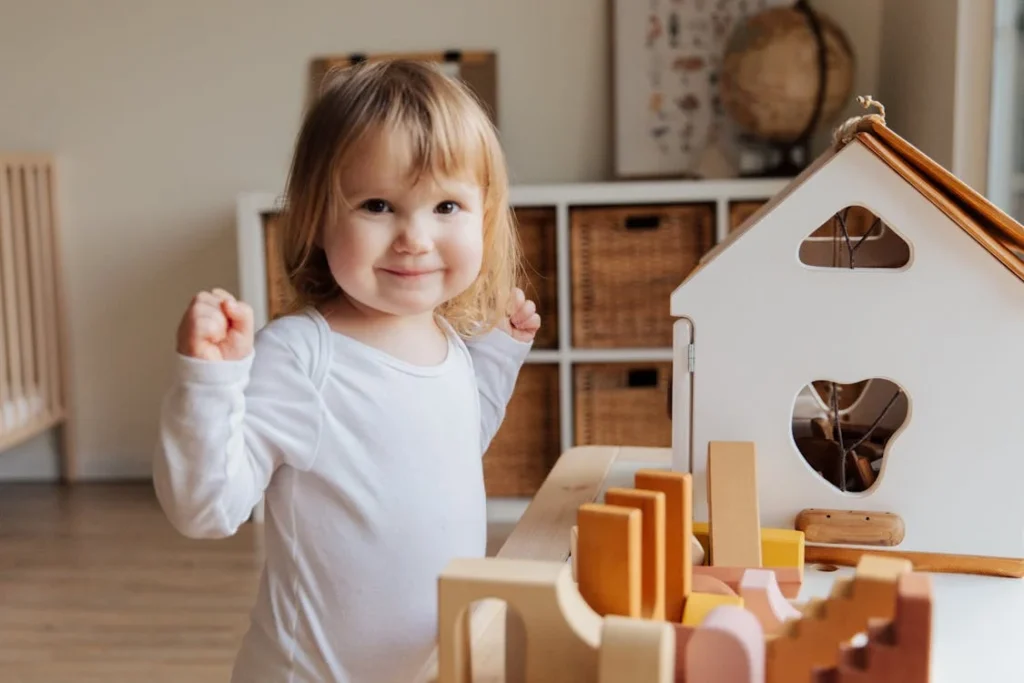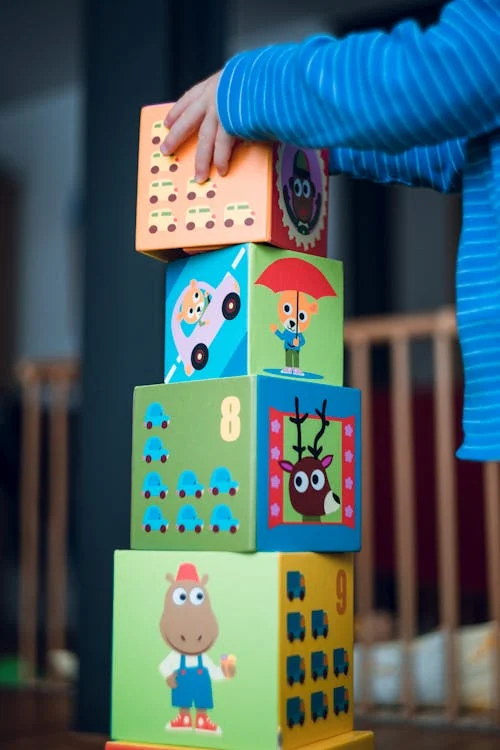Exploring Indoor Playsets for Toddlers
Indoor playgrounds are nice escapes for parents and children. All you need to do is change the scenery if it rains. The area, designed to meet children’s imagination and energy while playing, is a fun and safe “land” where they can unleash their imaginations and energy. This blog will discuss the benefits of indoor play areas and offer tips on turning any place into a fun spot to play on rainy or otherwise sunny days.
Table of Contents
The Benefits of Indoor Play Areas

- Safe Environment: Although children are occasionally outside, indoor play places greatly reduce the rate of accidents and injuries. Above all, child safety has guided us in designing these areas, which feature padded flooring and suitable gear for every age group.
- Year-Round Fun: Indoor recreational parks are especially appealing to the youngest ones as they can come here to play and have fun all year round, wherever the weather is. Rainy days or scorching heat will make no difference to the kids, so the play will never lose its magic and will always stay delightful and amusing.
- Social Interaction: Kids play around in indoor playing areas, which not only helps them develop their social skills but also teaches them to develop social skills. Children cooperate with their peers to learn how to exchange ideas, meet new people, collaborate, work, and communicate.
- Physical Development: Playgrounds are excellent environments for many physical games to help your child develop. Providing climbing frames, slides, obstacle courses, and trampolines will help enhance their participants’ balance, coordination, gross motor skills, and exercise.
Elements to Consider in Indoor Play Areas

- Age-Appropriate Zones: Establishing separate play spaces for different age groups guarantees that kids can participate in activities corresponding to their developmental stage. While older children can appreciate more difficult play structures, toddlers and preschoolers may have spaces with soft play equipment.
- Sensory Play: Adding sensory elements to indoor play spaces engages youngsters. Children can explore and feel things through interactive walls, sensory tables, and even sand and water play.
- Imagination Stations: Create themed zones in the indoor play area to promote imaginative play. These stations encourage imagination and role-playing, whether they are dressed-up corners, miniature kitchens, or pretend grocery stores.
- Quiet Spaces: Within the play area, you should create areas for kids to unwind, read, or do other soothing activities. These areas can have comfortable reading nooks, puzzles, or art studios to provide kids with a respite from vigorous play.
Tips for Creating a Safe and Fun Indoor Play Area
- Appropriate Flooring: Ensure the play area’s flooring is sturdy and impact-absorbing. Carpeting and rubber matting are excellent materials for reducing injuries and cushioning falls.
- Sanitization: To keep the play area clean and conducive to children’s health, it is essential to sanitize the toys, surfaces, and play equipment regularly. Strict hygienic practices provide parents peace of mind and ensure children’s safety.
- Sufficient supervision is necessary to monitor the kids’ activities and guarantee their safety in the indoor play area. Trained staff members should be present. To improve anything, staff personnel can also lead games and activities.
- Safe Equipment: Frequently check the play equipment for signs of deterioration, ensuring it is firmly fastened and devoid of any jagged edges or damaged components. Equipment should be maintained following safety regulations, and any problems should be resolved immediately.
7 Essential Factors to Consider When Planning an Indoor Playground Business

Budgeting and Financing Your Project
The first crucial step in starting an indoor playground project is to create a detailed budget. This covers upfront expenses for building, recruiting workers, buying equipment, leasing space, and making other purchases. It also entails ongoing costs for utilities, cleaning, and maintenance. If there are significant upfront fees, it may be helpful to look into financing possibilities. This can entail looking for investors, applying for grants, or looking for business financing.
Choosing the Right Location
One of two approaches can be used to choose the ideal site for your indoor playground: either select a new place or modify an existing one. If you’re starting from scratch, a secure neighbourhood, preferably close to residential areas or schools, is the best location for your new business. There should be plenty of parking and easy access. Furthermore, the area must be big enough to fit play equipment and allow kids to roam around.
However, if you already have a location, adjusting as needed will be difficult. You must determine whether the area is large enough for the playground arrangement, plan the layout for the best equipment placement, and potentially undertake improvements. Whichever path you choose, make sure the area is safe and accessible for all.
Designing a Fun and Engaging Layout
Designing an indoor playground is crucial to ensuring kids’ safety, involvement, and enjoyment. A well-thought-out design guarantees a regular traffic flow, which helps avoid crowding in certain places and makes supervision easier. It’s essential to provide several things in the playground to accommodate a range of interests. Quiet areas provide a place for rest and imaginative play, while active play structures can offer physical challenges. An additional level of engagement is provided by interactive elements, which promote learning and curiosity. Furthermore, ensuring plenty of open space is critical because kids require it to run around and let off steam.
The aesthetic component is crucial when creating a lively and captivating layout. The colour scheme’s ambience selections greatly influence the colour’s ambience. Vibrant, colourful paint may inspire kids’ imaginations and the spirit of adventure, transforming the playground into an enthralling discovery zone. This effect can be enhanced more if themed decorations are added, transforming a simple place into a castle, jungle or any other fantastic environment. The goal is to create a space that allows children to play, learn, and have fun in an interesting and fun way that keeps them coming back.
Selecting Appropriate Play Equipment
For your indoor playground, selecting the appropriate play equipment is a task that needs considerable thought. The choice should consider your target age group’s interests and developmental needs. Select play structures, ball pits, and basic climbing frames for younger kids to encourage their development of motor skills and senses. For older children, choose more intricate play structures, such as multi-level climbing frames, slides, and interactive games. These structures will provide challenges and encourage problem-solving abilities. Recall that diversity is necessary to accommodate various interests and learning preferences.
Ensuring Safety Measures
When creating an indoor playground, safety must come first. The first step is choosing play equipment that complies with safety guidelines and requirements. The equipment should be safe and robust, free of sharp edges, and equipped with non-slip surfaces and handrails. Cushioning the playground floor will lessen the effect of falls. Furthermore, the arrangement should provide unobstructed sightlines, facilitating efficient kid supervision by professionals or parents. Frequent maintenance inspections are also necessary to guarantee that the machinery continues functioning correctly and that any possible risks are quickly found and fixed.
Conclusion

Children may find a world of excitement and adventure in indoor play spaces regardless of the weather. These areas offer several advantages: year-round enjoyment, safety, social contact, and physical growth. Age-appropriate zones, sensory play components, creative stations, and quiet regions are all necessary to create a thriving indoor play environment. Safety factors, including appropriate flooring, sanitisation, monitoring, and secure equipment, are essential to keep a place safe and entertaining. Rain or shine, parents and other caregivers may open their children’s eyes to a world of fun and discovery by keeping these pointers in mind.


